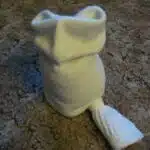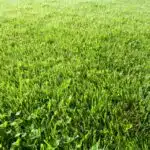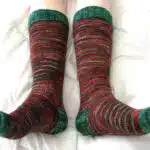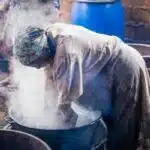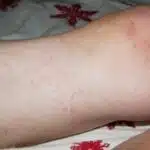As a cleaning expert, I often receive questions about how to restore the whiteness of socks that have become discolored over time. While it may seem like a difficult task, there are simple steps that can be taken to get white socks white again. Whether you are dealing with stains or just general discoloration, following these four steps will help you achieve bright and clean socks once again.
The key to restoring the whiteness of your socks is understanding the cause of the discoloration. In most cases, yellowing or grayness can be attributed to sweat, dirt, and other forms of grime that accumulate over time. While these substances may seem harmless at first, they can cause significant damage to fabric fibers and lead to permanent staining if not addressed promptly. By following these four steps, you can effectively remove stains and restore the brilliance of your white socks – keeping them looking fresh and new for longer periods of time.
Understanding The Causes Of Discoloration
White socks are a staple in any wardrobe, but they can quickly lose their brightness due to various factors. Understanding the causes of discoloration is essential in preventing and treating this common issue. One underlying cause is exposure to UV rays, which can cause yellowing or fading over time. Additionally, wearing shoes without socks can lead to sweat stains and discoloration.
Prevention techniques are crucial in maintaining the whiteness of your socks. One simple tip is to avoid washing white socks with dark-colored garments as the dye can transfer and cause staining. It’s also important to use a high-quality detergent that contains bleach or other whitening agents. Finally, drying your socks under direct sunlight can help brighten them naturally.
If your white socks have already suffered from discoloration, there are several treatment options available. Bleaching is a popular method that effectively removes stains and restores whiteness; however, it should be used with caution as it may damage delicate fabrics. Alternatively, using baking soda or vinegar during the wash cycle can also help remove stubborn stains and restore brightness.
Understanding the causes of discoloration and implementing prevention techniques is key in keeping your white socks looking their best. If discoloration has already occurred, there are treatment options available that can help restore their original color. In the next section, we will discuss pre-treating stains before washing for optimal results.
Pre-Treating Stains
Understanding the Causes of Discoloration is crucial to getting your white socks back to their original color. Effective pre-treating methods can only be as good as the knowledge of what caused the stains in the first place. Common stain causing culprits include sweat, dirt, and even oils from skin or lotion.
Once you know what caused the discoloration, it’s time to move on to pre-treating stains. The key to successful pre-treating is timing. The longer a stain sits on fabric, the harder it becomes to remove. Before washing your socks, use a stain remover or create your own solution using vinegar and baking soda for tough stains.
Now that you have an understanding of how stains form and how to pre-treat them effectively, it’s time to move on to soaking socks in a bleach solution. This step is essential for removing any remaining discoloration and restoring your socks’ original white color. Follow instructions carefully when using bleach and make sure not to overdo it, as this can damage the fabric. With these steps, you can confidently wash your white socks knowing they will come out looking brand new again!
Soaking Socks In A Bleach Solution
To effectively remove stains and discoloration from white socks, one effective method is to soak them in a bleach solution. Bleach is a powerful disinfectant that can break down tough stains, leaving your socks looking as good as new. However, it’s essential to use bleach properly and safely to avoid damaging your socks or harming the environment.
To prepare a bleach solution for soaking your socks, dilute bleach with water according to the manufacturer’s instructions. Typically, you’ll want to use about 1/4 cup of bleach per gallon of water. Mix the solution thoroughly in a container large enough for your socks to soak comfortably.
Here are four helpful tips for using bleach to soak your white socks:
- Wear gloves when handling bleach to protect your skin.
- Make sure the room is well-ventilated while soaking your socks.
- Only soak white socks in the bleach solution; colored items may lose their color or become damaged.
- Consider using bleach alternatives if you’re concerned about minimizing environmental impact. Some environmentally-friendly options include hydrogen peroxide or lemon juice.
By following these guidelines, you can ensure that soaking your white socks in a bleach solution will be an effective way to restore their brightness and cleanliness. In the next section, we’ll explore another natural alternative that can also help get your white socks looking like new again without the use of harsh chemicals.
Using Baking Soda And Vinegar
After soaking your socks in a bleach solution, it’s time to explore another DIY cleaning hack. This time, we’ll be using baking soda and vinegar to get those white socks looking clean and fresh again. Both baking soda and vinegar have their unique benefits when it comes to cleaning.
First, let’s talk about the benefits of baking soda. Not only is it affordable, but it’s also non-toxic and gentle on fabrics. It works as a natural deodorizer, which means it can help remove any unpleasant smells that may have clung onto your socks over time. Baking soda also acts as a mild abrasive, making it effective at removing stains without damaging the fabric.
Next up is vinegar, which has its own set of uses when it comes to cleaning. Vinegar is acidic in nature and can help break down tough stains like dirt or grease. Additionally, vinegar helps brighten fabrics and prevent discoloration over time. When combined with baking soda, these two ingredients create an effective cleaning solution that can help restore your white socks back to their original color.
Now that we’ve explored the benefits of both baking soda and vinegar, it’s time to put them into action! Follow these simple steps: [transition sentence into subsequent section about trying hydrogen peroxide].
Trying Hydrogen Peroxide
Hydrogen peroxide is a popular and effective method for whitening white socks. It is a powerful oxidizing agent that can break down stubborn stains and remove discolorations from fabrics. The process involves soaking the socks in a solution of hydrogen peroxide and water, followed by rinsing and washing them as usual.
Pros of using hydrogen peroxide for whitening white socks include its effectiveness and affordability. It is readily available in most drugstores and supermarkets, making it an accessible option for anyone looking to restore their dingy white socks. Additionally, it is non-toxic and safe for use on most fabrics, making it a versatile choice for homeowners.
However, there are some safety precautions to keep in mind when using hydrogen peroxide. It can cause skin irritation or chemical burns if not handled properly, so be sure to wear gloves when working with the solution. Also, avoid mixing hydrogen peroxide with other cleaning agents as this can create harmful fumes. Finally, remember that prolonged exposure to sunlight may cause the fabric to yellow.
Next up is trying lemon juice as another alternative method for whitening white socks. This natural ingredient has been used for centuries as a cleaning agent due to its acidic properties that can break down stains and brighten fabrics.
Using Lemon Juice
According to a recent survey, more than 50% of people prefer using natural remedies for laundry over chemical products. It’s not surprising that lemon juice is one of the most popular natural alternatives to bleach for whitening socks. The citric acid in lemon juice can break down stains and brighten fabrics.
To use lemon juice as a whitening agent, simply add half a cup of fresh-squeezed lemon juice to your washing machine before starting the cycle. Alternatively, you can soak your socks in a mixture of hot water and lemon juice for an hour before washing them. Keep in mind that lemon juice may not be suitable for delicate fabrics or dark-colored clothes.
The benefits of using natural remedies like lemon juice are evident: they are affordable, eco-friendly and safe for your health. However, if your socks still look dingy after trying hydrogen peroxide and lemon juice alternatives, it might be time to consider trying Oxiclean. This powerful stain remover contains oxygen-based bleach that can lift even the toughest stains from white fabrics without damaging them.
Trying Oxiclean
- When sorting socks for cleaning, be sure to separate whites from colors, as whites will require a different cleaning process.
- Pre-soaking the whites in a solution of detergent and warm water will help loosen dirt and stains.
- For the best results, use an OxiClean solution, as it is designed to whiten and brighten whites.
- Allow the socks to soak in the solution for at least one hour before washing.
- Wash on a gentle cycle in warm water, using a mild detergent.
- Finally, dry the socks on a delicate cycle and be sure to remove them promptly to avoid wrinkles.
Sorting Socks
To achieve the best results when trying OxiClean to whiten your socks, it is crucial to sort them first. Sorting socks is an efficient technique that provides many benefits for both the cleaning process and the longevity of your garments. Firstly, sorting separates whites from colored or dark items, preventing any potential dye transfer that could occur during washing. This practice also helps to prevent pilling or linting, which can be caused by certain fabrics rubbing against each other in the washing machine.
Efficient sorting techniques include separating socks based on their material, level of soiling, and degree of fragility. Socks made from different materials require different care methods; woolen socks should be washed separately from cotton ones. Sorting according to the level of soiling ensures that heavily soiled socks are not mixed with lightly soiled ones as this could result in uneven cleaning results. Lastly, fragile socks such as those made from lace or silk should be washed separately and with extra care.
In conclusion, sorting socks before using OxiClean is a critical step towards achieving a bright white outcome for your garments. The benefits of sorting include avoiding color bleeding between garments and preventing damage such as pilling or linting. Efficient sorting techniques involve separating socks based on their material, level of soiling, and degree of fragility. By following these guidelines correctly, you can maximize the effectiveness of OxiClean while keeping your precious garments looking new for longer durations.
Pre-Soaking
As a cleaning expert, I highly recommend pre-soaking your socks before using OxiClean to achieve the best results. Pre-soaking involves saturating your socks in water and detergent for an extended period before washing them. The benefits of pre-soaking include loosening stubborn stains, enhancing the effectiveness of OxiClean, and reducing wear and tear on your garments.
The length of time you should pre-soak your socks depends on the level of soiling and the fabric type. For heavily soiled socks, it is recommended to pre-soak them for at least an hour or overnight. Delicate fabrics such as silk or lace should be soaked for a shorter duration to avoid damage. Pre-soaking is particularly useful when dealing with tough stains that have set into the fabric, as this process helps break down these stains before washing.
In summary, using OxiClean to clean your socks is an effective way to brighten and whiten them. However, maximizing its effectiveness requires proper preparation and techniques such as pre-soaking. The benefits of pre-soaking include loosening stubborn stains, enhancing the effectiveness of OxiClean, and reducing wear and tear on your garments. Remember to adjust the soaking time based on the level of soiling and fabric type for optimal results.
Oxiclean Solution
When it comes to removing stubborn stains from clothes, OxiClean is an effective stain remover that many people swear by. However, there are alternative cleaning methods that can be used in conjunction with this popular product to achieve even better results. One of these methods is creating an OxiClean solution.
An OxiClean solution is essentially a mixture of OxiClean powder and water, which is used to pre-treat and soak clothes before washing. To make the solution, simply dissolve the recommended amount of OxiClean powder in warm water according to the package instructions. This solution can then be applied directly to stains or used as a pre-soak for heavily soiled garments.
The benefit of using an OxiClean solution is that it helps to maximize the stain-removing power of the product. When mixed with warm water, the active ingredients in OxiClean become more potent and effective at breaking down tough stains. Additionally, using a solution allows you to target specific areas of clothing that need extra attention, such as collars or cuffs. Overall, incorporating an OxiClean solution into your laundry routine can help you achieve cleaner, brighter clothes with less effort.
Choosing The Right Laundry Detergent
Choosing laundry detergents can be overwhelming, especially with so many brands available in the market. However, it is essential to choose a detergent that will effectively clean your white socks without damaging them. When choosing laundry detergents, you should consider their ingredients, effectiveness in stain removal, and whether they are suitable for your machine type.
Comparing laundry detergent brands can help you make an informed decision. Some brands have harsh chemicals that can damage your white socks, while others use natural ingredients that are gentle on fabrics. Additionally, some brands are formulated specifically for washing white clothes and may contain brightening agents to keep your socks looking their best.
When choosing a laundry detergent for your white socks, it is crucial to read the labels carefully. Look for detergents that are free of bleach or chlorine, as these can cause yellowing or discoloration of fabrics over time. Also, avoid using too much detergent as this can leave residue on your clothes and affect their color and texture.
Transition:
Now that you know how to choose the right laundry detergent for your white socks let’s move onto another important step – avoiding hot water.
Avoiding Hot Water
After selecting the right laundry detergent, it’s important to consider the temperature of the water when washing white socks. One common mistake is to use hot water since many people believe it will help remove stains and kill bacteria. However, hot water can actually cause damage to fabrics and fade colors over time. To keep your white socks looking bright and clean, it’s best to avoid hot water altogether.
Benefits of cool water:
- Preserves fabric quality: Cold water can help prevent shrinkage and stretching while also keeping fabrics soft.
- Saves energy: Using a cold wash cycle instead of a hot one can save energy and reduce your utility bills.
- Better for the environment: By using less energy, you’re also reducing your carbon footprint and helping to conserve natural resources.
- Reduces color fading: Cool water is less likely to cause colors to bleed or fade, which means your clothes will last longer.
- Gentle on skin: Hot water can irritate sensitive skin, but cool water is much gentler and reduces the risk of allergic reactions.
Using cold wash cycles not only benefits your white socks but also helps preserve other clothing items in your wardrobe. When washing white socks, make sure to separate them from colored clothing items as well. This will help prevent any color bleeding or staining that may occur during the wash cycle. Sorting socks by color before washing them is an important step towards maintaining their quality for years to come.
Sorting Socks By Color
Organizing drawers is essential to keeping your clothing in tip-top shape, and sorting socks by color is an important step in this process. Not only does it help you find the right pair quickly, but it also prevents colors from bleeding onto each other during washing. In addition, organizing your socks by color can help you identify when it’s time to replace a worn-out pair.
Storing clothes properly is another key element in maintaining their quality. When it comes to socks, it’s best to avoid folding them tightly or stuffing them into a drawer. Instead, consider using a sock organizer that separates each pair and allows air to circulate around them. This will prevent stretching and keep your socks looking new for longer.
By following these tips for organizing and storing your socks, you can ensure that they stay clean and vibrant. However, before tossing them into the wash, be sure to check for colorfastness. This means testing a small portion of the fabric for bleeding or fading before laundering the entire garment. By taking this extra precaution, you can avoid ruining your favorite pairs of socks and keep them looking white and bright for years to come.
Checking For Colorfastness
Now that you have sorted your socks by color, it’s time to focus on getting those white socks back to their original shade. Understanding colorfastness is important before attempting to clean any fabric, especially white socks. Colorfastness refers to a fabric’s ability to retain its color when exposed to different cleaning methods.
Before starting the cleaning process, it is recommended to test the fabric for color retention. This can be done by dampening a small area of the sock with water and rubbing it gently with a white cloth. If there is no transfer of color onto the cloth, then the sock is likely colorfast and can be cleaned using standard methods. However, if there is any transfer of dye onto the cloth, it’s best to avoid using any harsh cleaning methods and instead opt for gentler options.
Now that you have assessed the colorfastness of your white socks, it’s time to move on to cleaning them. Using fabric softener can help brighten and whiten your socks while also making them softer and more comfortable to wear. Simply add a cup of fabric softener into your washing machine during the rinse cycle along with your regular detergent. Be sure not to overload your machine as this may prevent effective cleaning. With these tips in mind, you’ll be able to get those white socks looking like new again in no time!
Using Fabric Softener
Fabric softener is a magical solution that can transform your laundry experience into a luxurious one. The benefits of using fabric softener are not limited to its ability to make your clothes softer and more comfortable to wear. It also reduces static cling, makes ironing easier, and even adds a pleasant scent to your laundry. In addition, using fabric softener can prevent damage caused by washing machines and prolong the lifespan of your clothes.
If you are looking for alternatives to fabric softener, there are several options available. One alternative is to use vinegar in the rinse cycle instead of fabric softener. Vinegar has natural properties that help soften fabrics and remove odors without leaving any residue or build-up on your clothes. Another option is to use dryer balls made of wool or plastic, which help reduce static cling and soften fabrics without the need for chemicals.
Incorporating fabric softener into your laundry routine can be a game-changer when it comes to keeping your white socks clean and bright. However, it’s important to note that not all fabrics are suitable for fabric softeners. Always check the label on your socks before using any fabric softener product. For best results, add fabric softener during the rinse cycle and avoid overloading your washing machine with too many items at once. With these simple tips, you can enjoy fresh-smelling, fluffy socks every time!
As you finish washing the white socks, drying them in the sun can further restore their brightness as UV rays naturally bleach out stains and discoloration from fabrics without damaging them.
Drying Socks In The Sun
Sun drying is one of the most effective ways to dry socks. Not only is it cost-effective, but it also has several benefits that make it a preferred method for many cleaning experts. One of the main advantages of sun drying is that it helps to remove stains and odors from socks. The ultraviolet rays in sunlight have natural bleaching properties that can help to whiten your socks without the need for harsh chemicals.
Aside from its whitening properties, sun drying also has a germ-killing effect on socks. Sunlight is a natural disinfectant and can help to kill bacteria, viruses, and other microorganisms present on your socks. This makes it an ideal method for individuals who may suffer from allergies or sensitive skin conditions.
If you do not have access to sunlight or prefer an alternative method for drying your socks, there are other options available. Some individuals choose to use a clothesline or indoor drying rack, which can be just as effective in removing moisture from your socks. However, keep in mind that these methods may take longer than sun drying and may not offer the same benefits as natural sunlight.
Now that you know about the benefits of sun drying and alternative drying methods, let’s move onto storing your freshly dried white socks properly. By following these simple steps, you can ensure that your white socks stay fresh and clean for longer periods of time.
Storing Socks Properly
After drying your white socks in the sun, it is important to store them properly to prevent discoloration. Organizing your socks neatly can make it easier for you to find a matching pair when you need them. You can use drawer dividers or hang them on a sock hanger inside your closet.
To prevent discoloration, avoid storing white socks with dark colored items as this may cause color transfer. It is also recommended to keep them away from direct sunlight and heat sources as this can cause yellowing. Instead, store them in a cool and dry place.
By following these simple organizing and storage tips, you can maintain the cleanliness of your white socks for future use. With proper care, you can extend the lifespan of your socks and save money in the long run.
Maintaining Cleanliness For Future Use
Regular sock cleaning is crucial in keeping them white and fresh-looking. To keep your socks clean, make sure to wash them after every use. This helps get rid of sweat, dirt, and bacteria that can cause discoloration and foul odor. Additionally, using a mild detergent specifically formulated for white clothing is ideal as it can help prevent the buildup of dirt and grime.
Preventing sock discoloration is also important to maintain their cleanliness in the long run. One tip is to separate whites from colored clothes when doing laundry. This prevents color transfer that can cause stains on your white socks. Another helpful tip is to avoid using bleach as it can weaken the fibers of your socks and cause them to wear out faster. Instead, try using natural alternatives like lemon juice or baking soda.
Aside from regular washing and preventative measures, proper storage can also help maintain the cleanliness of your socks for future use. Make sure they are completely dry before storing them in a cool, dry place away from direct sunlight. Avoid stuffing your socks into a drawer or cabinet as this can lead to deformation and discoloration over time. By following these simple tips, you can ensure that your white socks remain clean and fresh-looking even after multiple uses.
Remember that maintaining cleanliness goes beyond just appearance – it also promotes good hygiene practices which are crucial for overall health and well-being. By taking care of your socks through regular cleaning and preventive measures, you not only extend their lifespan but also protect yourself from harmful bacteria that may accumulate over time. So start incorporating these tips into your cleaning routine today for cleaner, fresher-smelling socks tomorrow!
Conclusion
White socks can easily become discolored due to a variety of reasons, from regular wear and tear to contact with dirt and other substances. As a cleaning expert, it is important to understand the causes of discoloration before attempting any remedies.
To get white socks white again in just four simple steps, begin by pre-treating any stains with a stain remover or dish soap. Next, soak the socks in a bleach solution for approximately 30 minutes before washing them in the machine with baking soda and vinegar. For tougher stains, try using hydrogen peroxide or fabric softener.
To maintain the cleanliness of your white socks for future use, store them properly and avoid wearing them in areas that may cause discoloration. By following these steps and maintaining proper cleanliness, you can keep your white socks looking bright and new for longer periods of time.
In conclusion, as a cleaning expert it is important to understand the causes of sock discoloration while also knowing how to remedy it effectively. By following these four simple steps along with proper maintenance techniques, you can keep your white socks looking their best for every occasion. So why settle for dingy-looking socks when you can have bright and fresh ones?
Image Credits
- “File:Kit socks 2 white stripes.png” by Fma12 (featured)







